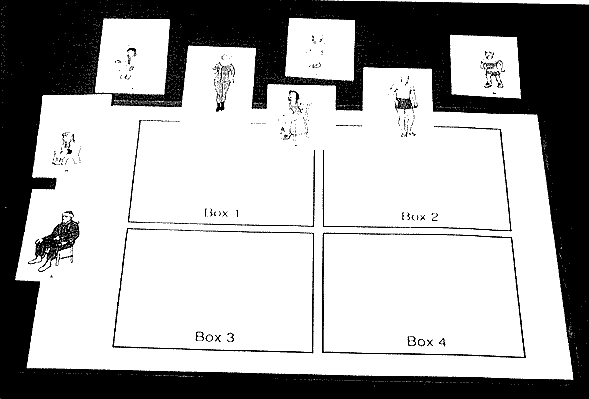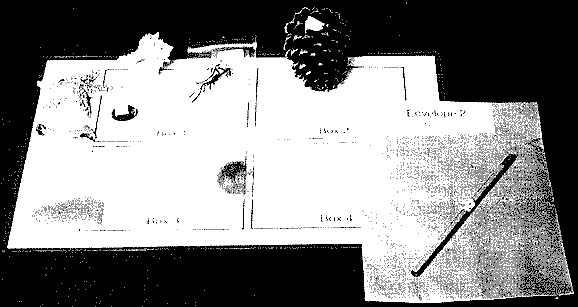 |
 |
|
|
|
|
6th-8th Grade Performance Task Description:In this task, two-way classification is explained using pictures of people who differ in terms of age (old and young), position (sitting or standing), gender (male or female), and type of clothing (summer or winter). Students are shown how to classify the pictures into four mutually exclusive groups using two dimensions simultaneously (e.g. young-males, old-males, young-women, and old-women). This activity is the same for both parts of the task. In the materials classification section, students are given a collection of natural materials (e.g. sand, fur, rock, and pine cone) and are asked to create a two-way classification system. Then they are given a new material, a pencil, and asked where it fits in their system and why. The first task involves animals. This task assesses students' abilities to classify, organize and present data, and describe objects and their characteristics. Note: This activity contains two separate scoring guides. The first, developed in 1993, was used when the activity was administered to 6th graders. The second, a revised scoring guide (1994), was used when the tasks were given to 7th and 8th grade students. They reflect different approaches to awarding points for incomplete or contradictory responses - not different views of the desired outcomes. The change was made in 1994 to try to make the scoring process more efficient. Overall Task Content Area:
Specific Knowledge Areas:
Performance Expectations:
National Science Education Standards:4 A SI 2: Understandings About Scientific
Inquiry: Grades K-4 4 A SI 1: Abilities necessary to do scientific
inquiry: Grades K-4 8 A SI 1: Abilities necessary to do scientific
inquiry: Grades 5-8 (Use the "hot" link on the PALS home page to check the full text of related National Science Education Standards, if desired.) National Council of Teachers of
Mathematics: Data Analysis and Probability (DAP1): Formulate questions that can be addressed with data and collect, organize, and display relevant data to answer them. Problem Solving (PS2): Solve problems that arise in mathematics and in other contexts. Representation (REP3): Select, apply, and translate among mathematical representations to solve problems. General Instructions to the Teacher:Students will be working individually during this exercise. Students should be ready to work as soon as the period begins. The materials should be set out at each lab station, if possible. A central supply area, if needed, should be easily accessible. All supplies should be clearly labeled. Materials for "Classification of Materials":
Safety:
Extensions/Modifications:None |

